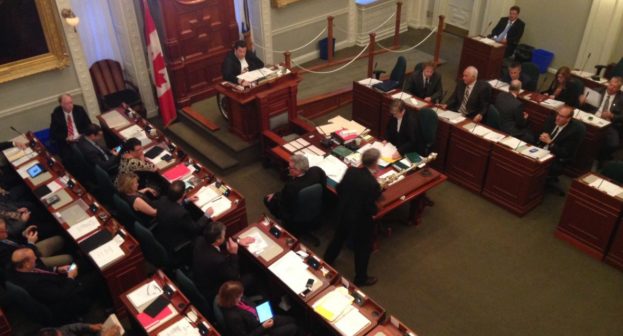Many people are familiar with the idea of the secretary on a non-profit board. However, ideas about what role the secretary plays, even to those who serve on boards, probably does not go much beyond them taking minutes and sending out meeting notices.
Other
Guests in the Boardroom
Arab-American writer, Khalil Gibran (1883-1931) wrote “If it were not for guests all houses would be graves”. The sentiment may seem be a bit extreme, but speaks to the idea of isolation from the world. I wonder if there is a message here for non-profit board “houses”?
Easy Board Home Improvements
Living in an 100+ year old house means getting used to a life with a long and never completed home maintenance agenda. Something always needs repair or replacement. And, out there in the world there is no shortage of additional household improvement ideas I could add to my list.
Do we need a motion for that?
Have you ever been uncertain about whether an item to be decided by your board requires a formal motion? Perhaps your board flirts with some version of “Robert’s Rules” even though no one really knows them? Maybe your board follows past practices with respect to making motions with no idea of where the procedures came from, or what could be improved. If any of this is true, you are in good company.
You might be surprised to know that here is no universally accepted or prescribed set of procedures that non-profit boards must follow in their deliberations and decisions. Yes, there are a set of meeting procedures many people have heard of called Robert’s Rules, but that is not where I am going here.
Motivating board members: it’s complicated
Executive directors and chairpersons are often at a loss to figure out how to motivate their boards to show more interest or take on new tasks. But what is it that motivates board members in the first place? Perhaps they are already motivated but efforts to get the board members to change miss the mark. Sure, ‘giving back to their community’ may well be the reason most people serve on a non-profit board but is it useful to know this? Might there be lots to understand about board member needs and aspirations as volunteers before we ask more of them?
Representative boards: Good idea?
Some non-profit organizations are governed by “representative” boards of directors. This means that the composition of the board is determined by the formal connection of the directors to particular constituencies or stakeholder groups. According to Australian board consultants Lynn Ralph and Alan Cameron, representative boards are “superficially attractive” but the idea requires a much closer look.(1)
Often the main motivations for specifying the composition as representative is to insure that the board’s decisions reflect the will of the stakeholders. Also, such an organization is, in theory, directly accountable for its actions back to the stakeholders through the directors themselves.
A wrinkle on family members on boards
The son of one of your nursing home clients, an elderly woman with dementia, is on your board. At board meetings he often raises issues around the care she is receiving such as how she is treated by staff, staff training, the cleanliness of the facilities, or the quality of the meals provided. The other family members around the table, which represent half your board, are usually quick to add their input based on their experience with their loved ones. Having the executive director’s ear at a board meeting apparently can be too good an opportunity to pass up.
Jigs, reels and non-profits
Here there is more to Scotland than a curiosity about “hairy coos” and ancient castles. Now some senior Nova Scotia government officials are all abuzz about importing social enterprise ideas from across the sea where they feel this idea has taken root more so than here.








